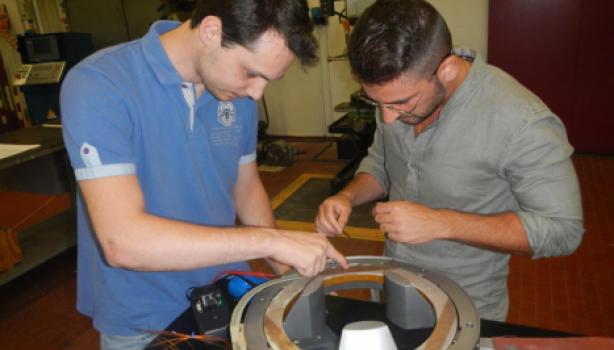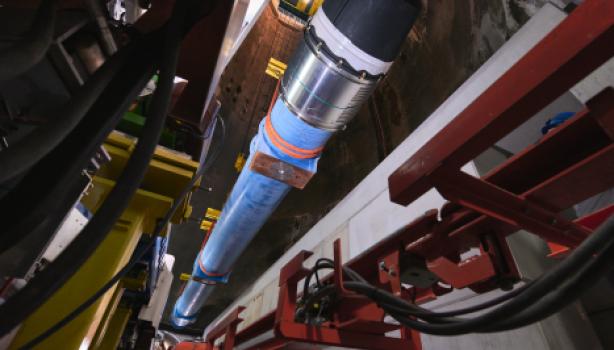Radiation environments such as space or high-energy accelerators pose a serious threat to the reliable operation of electronic components and systems. Therefore, in order to ensure a suitable operation, semiconductor devices need to be qualified in a radiation environment representative of that to be encountered in operation. The Radiation to Electronics (R2E) project at CERN is focusing on the development, study and testing of electronic components and systems, critical in view of the high luminosity LHC upgrade. To that end, in the past two years the ultra-high energy heavy ion beams of the PS and SPS have been exploited.
In the case of accelerator applications, heavy ions are typically not a concern for radiation effects on electronics, provided the respective environment is constituted by lighter particles, such as neutrons, protons and pions. Despite this fact, heavy ions can still be used to qualify electronics for high-energy accelerator applications, provided that being resistant to ions of a large enough Linear Energy Transfer (LET) also implies being insensitive to the mixed hadron field characteristic of the LHC machine.
The testing of electronics for Single Event Effects (SEEs, one of the main concerns for electronics in radiation) is typically carried out using protons in the 20-200 MeV range and heavy ions with LET values of up to 60 MeVcm2/mg. For space applications, these types of radiation mimic the trapped proton belt environment and Galactic Cosmic Rays, respectively.
Heavy ion tests are typically carried out in cyclotron facilities (such as the UCL and RADEF laboratories, frequently used by the European Space Agency), and some of the ions traditionally employed are Argon, Krypton and Xenon. The energy and penetration in silicon of ions in these facilities is of the order of 10 MeV/n and 100 µm, respectively. Even though their energy is significantly lower than that of Galactic Cosmic Rays (that have fluxes typically peaking at 500 MeV/n and extending to much larger values), the cyclotron provided beams have the key advantage of an ionization capability (described through their LET, and used as a figure-of-merit of potential SEE induction) which covers the full range of what may be encountered in space.
![]()
Chip Intel Myriad2 tested at CERN
The main shortcoming of the energies used in ground-level experimental heavy ion facilities is the limited ion penetration: in order for ions to access the sensitive volume of a device before ranging out in the surroundings, the tests need to be performed in vacuum and with unpackaged or thinned devices. For modern, complex devices (e.g. 3D structures), opening the parts to make their sensitive areas accessible at a sub-100 µm scale while keeping them operational can be from very complex and costly to even unfeasible.
Moreover, even if the Linear Energy Transfer is regarded as the main parameter to describe the probability of inducing an SEE, it does not at all account for potential energy effects such as the radial structure of the ionization track in the passage of particles through matter or the probability and nature of their nuclear interactions.
Motivated by the practical and scientific reasons above, during the past two years, the CERN R2E project in collaboration with the beam physicists and facility experts, has been working towards being able to use the very-high energy ion beams in the CERN accelerator complex to test electronic components. In 2018 and profiting from the LHC end-of-year lead ion run, ion beams from two of the LHC injectors (the PS and SPS) were adapted to the characteristics needed to carry out irradiations on electronics.
The main objectives of such experiments with unprecedented ion energies were first of all, to determine the impact of the ion energy on the induced radiation effects and identify possible related shortcomings of the LET figure-of-merit; and secondly, to irradiate complex component structures that cannot be qualified with heavy ions in standard facilities. Within the second category of experiments, a broad set of components and boards for space applications have been tested with ultra-high energy ion beams at CERN in collaboration with the European Space Agency (ESA). Among the ESA devices which took advantage of these very special CERN beams stand the Intel artificial intelligence Myriad 2 chip, the Timepix-3 detector and the Micron 3D NAND flash memories.
![]()
A team of experts preparing the experimental setup for testing the space-worthiness of the Intel Myriad2 system-on-chip for space applications.
The results are presently under analysis and are already providing a very interesting insight into the behaviour of the irradiated systems in the harsh radiation environment of an accelerator like the LHC and the proposed future machines, and in test conditions more faithfully mimicking those encountered in space.
During the Long Shutdown 2 (LS2), the CERN R2E project will work on possible upgrades of the ion testing infrastructure for post 2021 irradiations, as well as in modelling through simulation tools the interaction of such ions with electronic components in order to improve the understanding and implications of the experimental observations.


